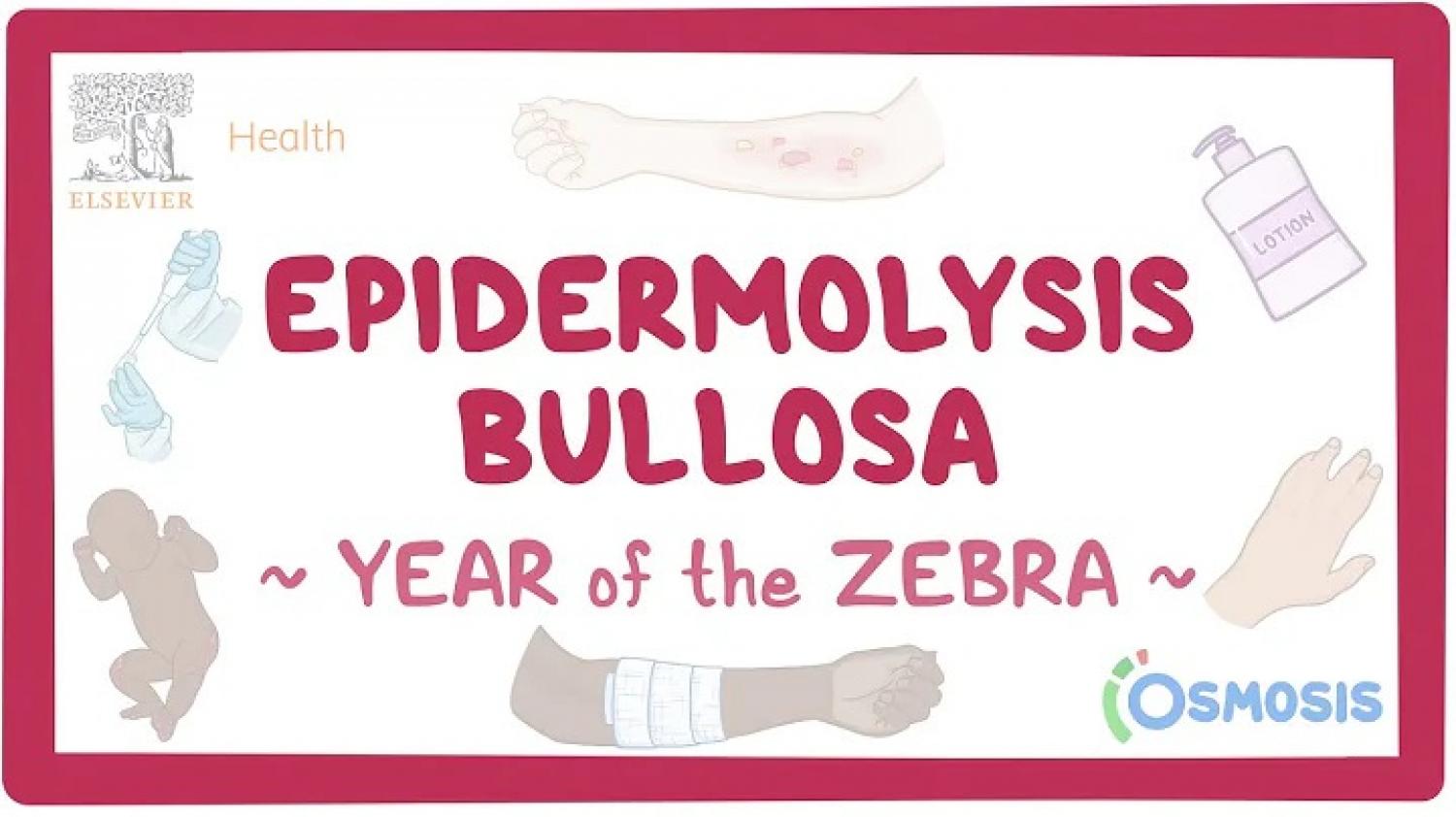
Rare Disease Education: Epidermolysis Bullosa
Editor: Kelsey LaFayette, DNP, RN, FNP-C
"When you hear hoofbeats, think of horses, not zebras,” is a common saying in medical education that means you should think of common conditions first, instead of rare ones, in making a diagnosis. “Rare” is a relative term though and about 7,000 rare, or "zebra," conditions affect more than 350 million individuals worldwide. Although these conditions collectively affect an enormous number of people, each of these conditions individually is rare enough that it can be difficult to secure the resources to study them and to develop treatments and cures. Likewise, awareness of rare conditions may be low and health care professionals may not be familiar with their signs and symptoms making it more difficult to reach a correct diagnosis and provide effective treatments.
To increase knowledge about rare conditions, Osmosis and the National Organization for Rare Diseases (NORD) have collaborated on an initiative to bring education and awareness to the public. We are excited to be a part of this initiative because we believe everyone deserves quality health care, no matter how rare their condition.
Zebra Highlight: Epidermolysis Bullosa
Imagine having open wounds on over half your skin… all day, every single day. Imagine burning pain all over that feels like antiseptic poured on a new cut. It’s unfortunately not imagination, but the reality of the plenty living with what has been called by some “the worst disease you’ve never heard of”.
Epidermolysis Bullosa is a genetic skin disorder resulting in defective production of proteins that hold skin layers together. The result is the formation of blisters especially in areas exposed to mechanical injury or repeated friction such as the hands, feet, shoulders, and above the spine.
In some cases, the damage is not only on skin that we see. The digestive system may be affected, making eating difficult. Even when blisters heal, the scarring left behind may cause complications of its own, possibly needing medical intervention regularly.
Furthermore, constantly having open wounds increases the risk of life-threatening infections as well as some forms of cancer. The complications don’t stop there and, until now, there is no cure. Follow the link to the dedicated Osmosis video to learn more.
Meet Rafi
“The world fell out from underneath our feet” is how Brett Kopelan describes seeing his newborn daughter Rafi for the first time with blisters all over her body. He tells his story in this episode of Raise the Line Podcast with Shiv Gaglani, Co-founder & CEO of Osmosis.org from Elsevier.
No parent wants to see their child suffer, but it’s the children who have to live through the pain today and the fear of the pain tomorrow. Watch Rafi describe it in her own words in the above video.
Educational Video:
More Information on Epidermolysis Bullosa
